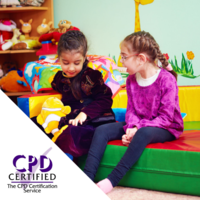Description
This course includes the option to play audio at no extra cost! All about this Autism Awareness course This Autism Awareness course will explore the autistic spectrum and look in detail at the different types of autism. The course covers the potential causes of autism and the misconceptions that people have about the causes. We will then look in detail at the steps involved in getting a diagnosis and what to expect during the assessment. Medication that can be used to help people manage their symptoms and the side effects of these will be explained. Finally we explore how autism can affect learning and the steps that can be put into place to help children in education. This course is perfect for anyone working with people who are autistic as well as teachers, carers and educators who need to understand how to adapt their methods for autistic people. You will earn 3 CPD points on completion of the course, this course will take around 3 hours to complete and the certificate will last for two years. Fully CPD registered Completed online with instant downloadable certificate Fully printed certificate posted next day Covers all required legislation and practices Complete the online multiple choice assessment as many times as you need to pass Units covered Unit 1 – Introduction to Autism – In our first unit we will be looking at the autism spectrum and statistics relating to autism in the UK. We will then go onto look at the different forms of autism including Asperger’s syndrome. Unit 2 – Causes and Risk Factors for Autism – This unit will be exploring the environment and genetic factors that could increase the risk of autism. Then we will look at some misconceptions about the causes of autism. Unit 3 – Signs and Symptoms of Autism – In this unit we will be looking at what the most common signs and symptoms of autism are, then we will look at how to make sure the behaviour of autistic people doesn’t impact on their quality of life. Unit 4 – Diagnosing Autism – This unit will look at what criteria must be met before a formal diagnosis can be made and what is included in the assessment. We will then look at the best ways to cope with a diagnosis of autism. Unit 5 – Living with Autism – In this unit we will look at the medication available for people with autism and some of the potential side effects, as well as the ways specialist intervention can help to manage autism. Unit 6 – Autism within Education – In our final unit we will be exploring autism in education and we will look at the ways to help children with autism within education.

Reviews
There are no reviews yet.